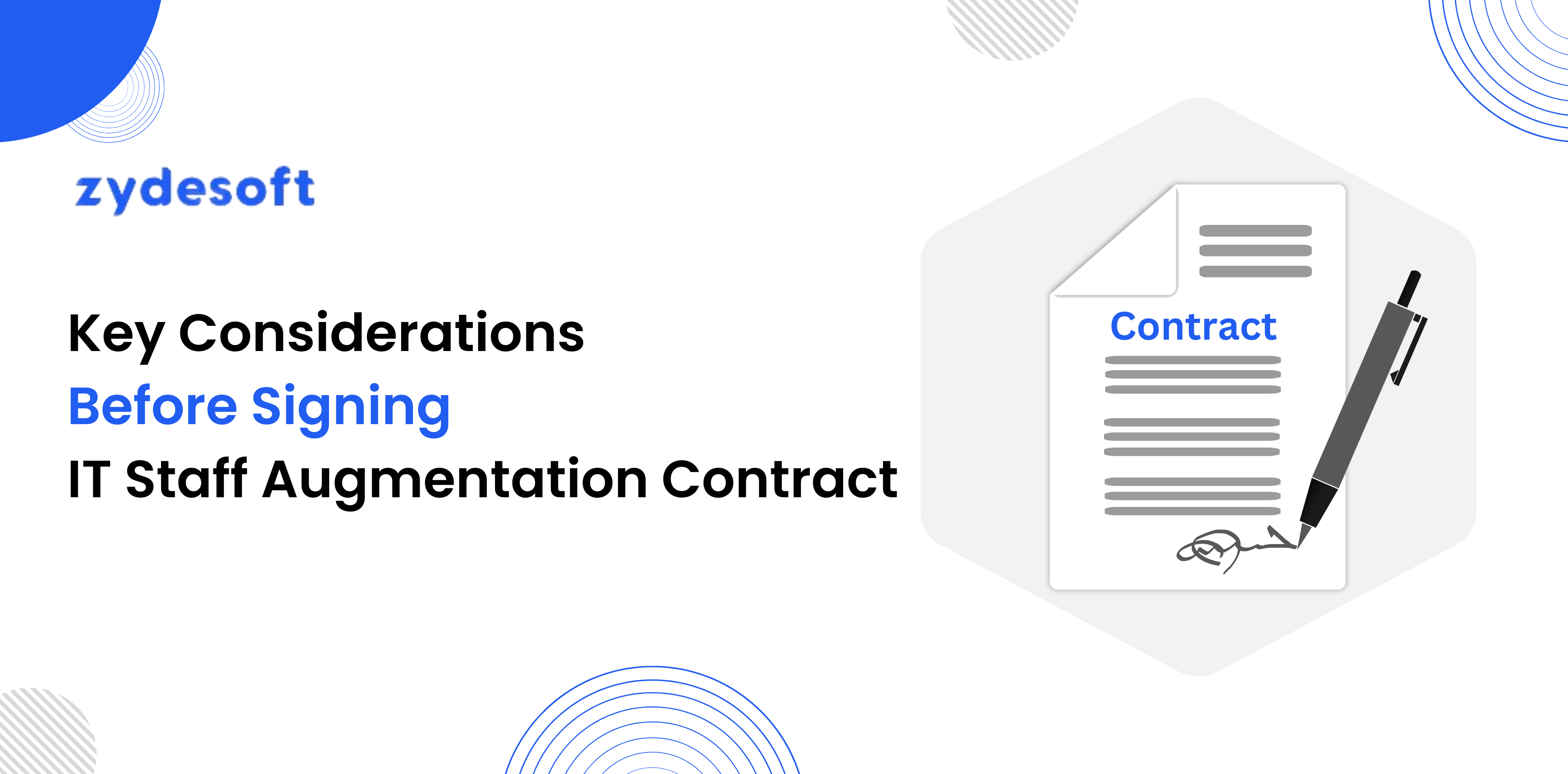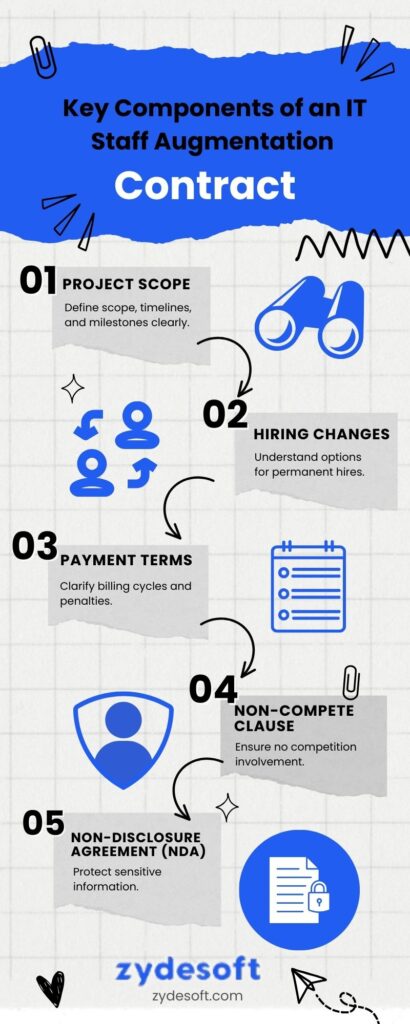
In the fast-paced realm of modern business, staying ahead often requires more than just a talented in-house team—it demands flexibility, agility, and specialized expertise. This is where IT staff augmentation steps in, Zydesoft offers a dynamic solution for businesses to scale up their capabilities swiftly. However, the key to unlocking the full potential of this partnership lies in the intricacies of the contractual agreement. Let’s dive into the essential components of IT staff augmentation contracts and what you need to know to ensure a seamless collaboration.
IT staff augmentation isn’t just about hiring additional hands—it’s about strategically supplementing your team with the right skills at the right time. To make this collaboration a success, a well-structured contract is imperative. Here’s what you should expect:
T&M Contracts : (Time & Material)
Embrace flexibility with this model, paying for actual hours worked and resources utilized. Perfect for projects with evolving requirements.
Fixed Price Agreements
Gain predictability and cost control by agreeing on a set price for a defined scope of work. Ideal for projects with clearly outlined objectives.
Defining Project Scope: Draw clear boundaries. Define project scope, deliverables, timelines, and milestones upfront to steer clear of misunderstandings later on.
Clarifying Hiring Dynamics: Understand your options. Know whether you can hire augmented staff permanently and any associated restrictions or fees involved.
Establishing Transparent Payment Terms: Stay on the same page financially. Establish billing cycles, payment methods, and penalties for late payments to maintain transparency.
Ensuring Non-Compete Integrity: Secure your turf. Ensure the service provider doesn’t engage with your competitors during or after the project, safeguarding your interests.
Upholding Non-Disclosure Commitments: Protect your secrets. Lay down obligations for handling and safeguarding sensitive information to maintain confidentiality.
Safeguarding Intellectual Property: Don’t overlook ownership. Clearly define who owns the intellectual property created during the engagement to avoid future disputes and ensure fair compensation.
Outlining Termination Provisions: Prepare for the unexpected. Include a termination clause outlining scenarios and procedures for ending the agreement, providing a safety net for both parties.

IT staff augmentation holds immense potential for businesses seeking to bolster their capabilities and drive innovation. By understanding and addressing the critical components of the contract—whether it’s project scope, hiring changes, payment terms, or intellectual property rights—businesses can forge strong partnerships that propel them towards success. With the right contractual framework in place, organizations can harness the benefits of external expertise while maintaining control, security, and flexibility—a winning formula for thriving in today’s competitive landscape.